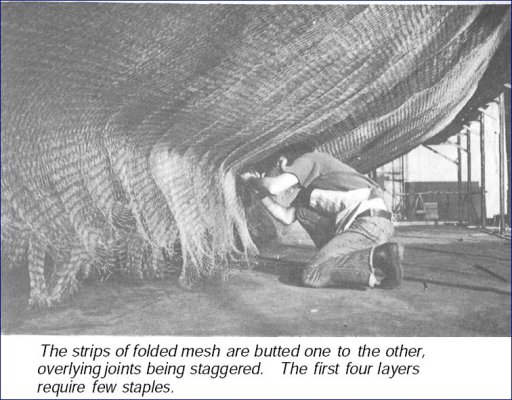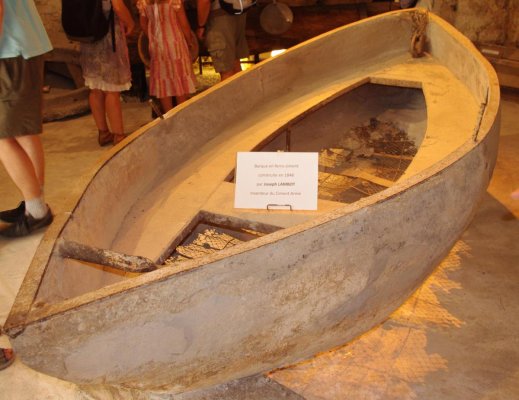Copied from:
https://en.wikipedia.org/wiki/Ferrocement
The inventors of ferrocement are Frenchmen
Joseph Monier who dubbed it "ciment armé" (armored cement) and
Joseph-Louis Lambot who constructed a
batteau with the system in 1848.
[6] Lambot exhibited the vessel at the
Exposition Universelle in 1855 and his name for the material "ferciment" stuck. Lambot patented his batteau in 1855 but the patent was granted in Belgium and only applied to that country. At the time of Monier's first patent, July 1867, he planned to use his material to create urns, planters, and cisterns. These implements were traditionally made from
ceramics, but large-scale, kiln-fired projects were expensive and prone to failure. In 1875, Monier expanded his patents to include bridges and designed his first steel-and-concrete bridge. The outer layer was sculpted to mimic rustic logs and timbers, thereby also ushering
Faux Bois (wood grain) concrete. In the first half of the twentieth century Italian
Pier Luigi Nervi was noted for his use of ferro-cement, in Italian called
ferro-cemento.
"ferrocement" being referred to as ferro-concrete or
reinforced concrete to better describe the end product instead of its components.
Ferro concrete has relatively good strength and resistance to impact. When used in house construction in developing countries, it can provide better resistance to fire, earthquake, and corrosion than traditional materials, such as wood, adobe and stone masonry. It has been popular in developed countries for yacht building because the technique can be learned relatively quickly, allowing people to cut costs by supplying their own labor. In the 1930s through 1950's, it became popular in the United States as a construction and
sculpting method for
novelty architecture, examples of which created "
dinosaurs in the desert".
First build Ferro-Cement boat by Joseph-Luis Lambot in 1848..




